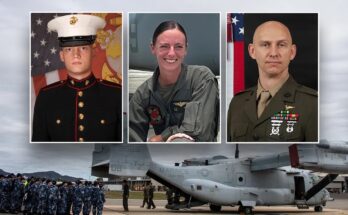
In the heart of Bolivia’s dense jungle, a harrowing tale of survival unfolded when a small plane went down in one of the country’s most remote regions. What followed was a nightmare of injuries, fear, and a desperate will to survive, as the crash survivors faced not only the wreckage of their aircraft but also the unforgiving wilderness — including the looming threat of alligators.
The ill-fated flight, a small charter plane, was en route from Santa Cruz to a rural village in the Amazon basin when it lost contact with air traffic control. According to Bolivian aviation authorities, the aircraft encountered mechanical problems mid-flight and attempted an emergency landing. However, it ultimately crash-landed in the thick vegetation of the tropical lowlands, far from any roads or populated areas.
Of the seven people aboard, six miraculously survived the initial impact. Although some sustained serious injuries, including broken limbs and head trauma, they managed to pull each other from the burning wreckage just in time. One passenger, a young Bolivian nurse, reportedly used pieces of torn fabric as makeshift bandages, working tirelessly to stabilize the wounded.
But the nightmare had only just begun.
The survivors quickly realized that they were stranded in a remote and perilous environment. With no communication equipment intact and dense forest surrounding them, rescue seemed uncertain. The jungle teemed with danger. Among the most terrifying were the alligators — massive reptiles common in the wetlands of the Bolivian Amazon, which are known to stalk riverbanks and low-lying forest clearings.

“It was terrifying,” one survivor later recounted. “At night, we could hear things moving nearby. You can’t see them, but you know something’s there, watching.”
They spent 36 grueling hours battling the jungle. Dehydration set in quickly in the humid climate. With only limited drinking water salvaged from the plane’s emergency kit, the survivors were forced to ration carefully. Hunger gnawed at them as they scoured for any edible plants or fruits, relying on local knowledge from one passenger who had experience in the Amazonian terrain.
Despite their injuries, they worked together to build makeshift shelters using broken pieces of the aircraft and branches from nearby trees. The group decided it was too risky to wander far from the crash site. The dense underbrush made movement almost impossible, and they feared getting even more lost — or stumbling into a predator’s territory.
Wildlife wasn’t the only concern. Mosquitoes swarmed incessantly, increasing the risk of disease like malaria or dengue fever. The injured were particularly vulnerable, and painkillers were in short supply. Yet their determination to survive never waned.
Back in Santa Cruz, authorities had launched a frantic search mission as soon as the plane failed to report in. Military helicopters, search parties, and local volunteers scoured the presumed flight path, but the vast and unforgiving terrain made the process slow. Eventually, it was a combination of aerial reconnaissance and an emergency beacon — which briefly flickered back to life — that led rescuers to the downed plane.
When the rescue team finally arrived, they found the group huddled together near the wreckage, weak but alive. The survivors were quickly airlifted to the nearest hospital for medical treatment. Doctors were astonished at how well they had held on, considering the extent of their injuries and the challenges of the jungle.
“They showed incredible resilience,” one emergency responder noted. “Surviving a crash is one thing. Surviving the jungle for 36 hours — injured, exposed to predators — that’s another level of strength.”

This incident is being hailed as one of Bolivia’s most remarkable survival stories in recent years. The authorities have launched an investigation into the cause of the crash, and questions are being raised about the safety protocols of regional air carriers, especially those flying over remote areas.
The survivors, for their part, are slowly recovering — both physically and emotionally. While they have declined most media interviews, one has expressed gratitude for their rescuers and fellow passengers, crediting teamwork and shared hope as the key to their survival.
“I never want to see that jungle again,” the survivor said, “but I’ll never forget what we endured — or the people who helped me get through it.”


